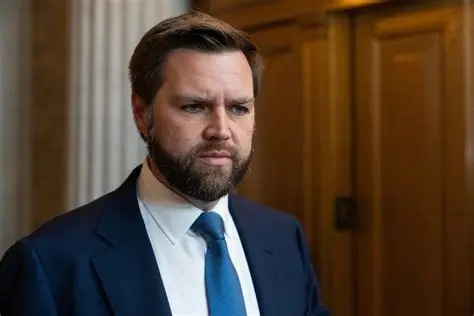The United States vice-president, JD Vance, has arrived in Israel in an effort to reinforce the fragile ceasefire in Gaza, as Hamas officials joined parallel negotiations in Cairo aimed at resolving outstanding disputes with Israel.
Vance, who is expected to remain in the region until Thursday, met the US Middle East envoy, Steve Witkoff, and Donald Trump’s son-in-law, Jared Kushner, upon his arrival. He is scheduled to hold talks with the Israeli prime minister, Benjamin Netanyahu, on Tuesday evening.
The ceasefire, in place since 10 October, has been repeatedly tested. Palestinian militants killed two Israeli soldiers over the weekend, while Israel responded with airstrikes on Gaza. The Palestinian news agency has accused Israel of breaching the truce 80 times in the past 11 days, resulting in at least 80 Palestinian deaths. Israel, meanwhile, has accused Hamas of delaying the return of hostages’ bodies, which it says contravenes the agreement. Hamas has so far returned 13 bodies but says that locating the remaining 15 is proving difficult, with many believed to be buried under rubble.
A senior Israeli official told Reuters that Vance’s visit was intended to push negotiations into the second phase of the US-drafted 20-point ceasefire plan. Key issues remain unresolved, including the disarmament of Hamas and the creation of a technocratic authority to administer Gaza.
Netanyahu also met the Egyptian intelligence chief, Hassan Rashad, in Jerusalem on Tuesday to discuss progress on the plan. Egypt has played a central role in mediation and is expected to lead a stabilisation force in Gaza.
In Cairo, Khalil al-Hayya, the exiled Hamas leader, held discussions on disarmament and the proposed technical committee to govern Gaza once the group relinquishes power. Reports in Israeli media suggested Hamas intended to nominate representatives for the committee, though it is unclear whether Israel would accept their participation.
Israel has insisted that reconstruction in Gaza cannot begin until Hamas lays down its arms, a condition the group continues to reject. Despite mutual accusations of violations, both sides have reiterated their commitment to the ceasefire.
Speaking on Egyptian television, Hayya said: “From the day we signed the Sharm el-Sheikh agreement, we were determined and committed to seeing it through to the end.” He described the summit as an “international will declaring the war in Gaza is over”, adding that he had received assurances from President Trump and others that hostilities had ceased.
Qatar, which has joined Egypt as a principal mediator, criticised Israel on Tuesday. Emir Sheikh Tamim bin Hamad al-Thani accused Israel of repeated breaches of the ceasefire and condemned its expansion of settlements in the West Bank. He did not address allegations of Hamas involvement in Sunday’s attack on Israeli troops but pledged that Qatar would continue its mediation efforts.
Meanwhile, aid deliveries to Gaza remain far below expectations. Gaza’s media office reported that only 986 aid trucks had entered the territory since the ceasefire began, compared with the 6,600 promised. The World Food Programme said less than a third of its target food supplies were reaching the strip each day. “Sustaining the ceasefire is vital; really, it’s the only way we can save lives and push back on the famine in the north of Gaza,” said Abeer Etefa, the WFP’s senior Middle East spokesperson.
Under the first phase of the ceasefire deal, aid was to be delivered through all five crossings, but several remain closed, including Rafah on the Egyptian border, as disputes over the return of hostages’ bodies continue.
Palestinian civilians have also been killed while crossing the so-called “yellow line” marking Israeli troop withdrawals. Civil defence officials said residents were unaware of the line’s location. The Israeli military announced on Tuesday that it had begun marking the boundary with large yellow concrete blocks placed at 200-metre intervals.



